Oleander, also known as Nerium oleander, this distinctive plant is not only known for its vibrant flowers and thick, leathery leaves, but is also an extremely poisonous plant known to cause serious illness and death just from its taste.
Oleander: a beautiful and dangerous plant
The evergreen shrub (also known as Nerium indicum, Nerium odorum plants, and other names such as kaner, rosebay, and rose laurel) is part of the Apocynaceae or dogbane family and contains a gummy, transparent sap. Native to northern Africa and the eastern Mediterranean, this hearty plant can be found in warm, coastal areas of the United States, such as Florida.
The dark green foliage is complemented by funnel-shaped flowers that bloom in clusters and come in shades such as white, pink, red or yellow. While these eye-catching plants can grow to a height of 6 to 12 feet and are coveted by gardeners for their tolerance of different soil types and climates, experts are clear that all parts of the plant they are poisonous to humans and animals and have been responsible for cases of accidental poisoning around the world.
“Oleander is a plant that has been used in herbal medicine since the 15th century,” says Victoria Albina, NP, MPH, holistic nurse and host of the Feminist Wellness Podcast. “Although it has been used for many purposes, from a hangover to a cancer treatment to an antiviral, oleander must be used under the care of an extremely trained clinical herbalist or other medical practitioner as it is a dangerous plant that must be used with the utmost care and is not what I use or would use in my clinical practice.”
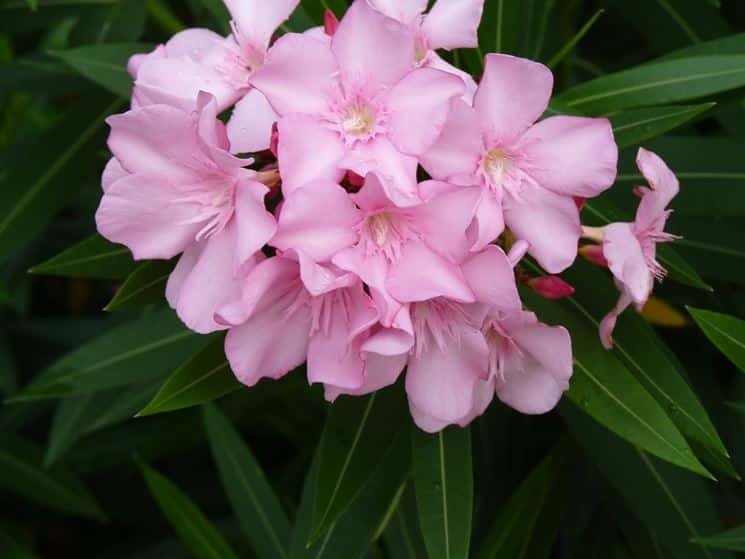
Oleander has been studied for its potential applications in cancer treatment and as an antiviral agent by drug development company Phoenix Biotechnologies (the same one promoting it as a cure for COVID-19). Some studies have shown positive results in the laboratory, but they have not been tested on humans.
Oleander is also where the botanical derivative oleandrin comes from. It is very similar to digoxin, the compound derived from foxglove plants. It is used to treat patients with very advanced heart failure. “Oleandrin is a toxic compound, a toxic cardiac glycoside, found in the oleander plant,” explains Albina.
Cardiac glycosides are found in several plants, such as digitalis (digitalis), and the compounds are used in medications that treat heart failure and some irregular heartbeats. However, people who ingest plants containing cardiac glycosides or who take medications containing cardiac glycosides every day can easily overdose.
“What is important to note about oleandrin is that it has been shown to reduce life expectancy (although its effects may improve the quality of life of patients with advanced heart failure),” says Ryan Marino, MD, MD emergency medicine certified by the Order. in Cleveland, Ohio, and an expert in medical toxicology. “There is no indication that such cardiac steroids, such as digoxin and oleandrin, can help with viral infections such as COVID-19.”
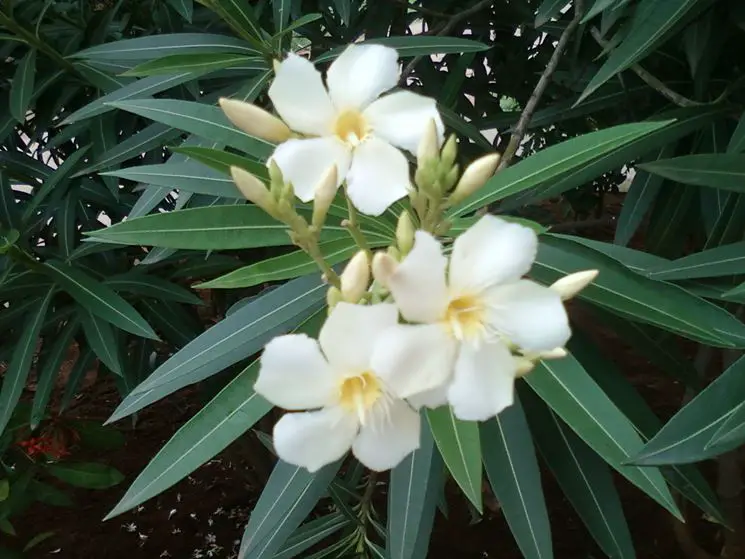
There is absolutely no published evidence that oleander offers any benefit to people with COVID-19, and experts fear that publicizing the plant’s name in relation to the pandemic could lead people to mistakenly self-medicate.
“There is only one pre-printed studywith significant conflicts of interest on the part of the people who are trying to sell oleandrin, which claims that there is a benefit in monkey kidney cells infected with COVID-19, which did not pass the standard peer-review process for scientific literature,” says Marino. “Oleander has no approved therapeutic indications.”
A 2010 case report and review found that oleandrin specifically interferes with the heart’s sodium-potassium pump, which can potentially lead to arrhythmias (problems with the rate or rhythm of the heartbeat). Consuming oleander can also cause gastrointestinal effects.
“I think there are many potential dangers when using a poisonous plant extract on a large scale and, as a nurse practitioner and herbalist with a master’s degree in public health, the launch of an oleander-based drug, especially one that has been displaced quickly through the FDA approval process – it’s concerning to say the least,” Albina says.
“Every part of the oleander plant is toxic,” Marino says. “These plants have long been used as hedges because they can kill any life that tries to eat them. People living in areas with these plants are taught not to even use the sticks as skewers to cook food due to the risk of toxicity.
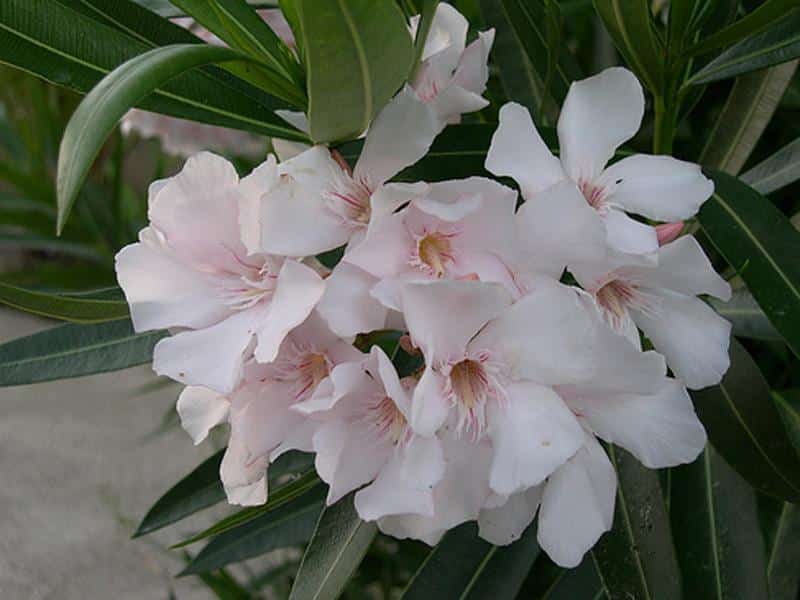
“If oleandrin were to be used in humans, the time before it became toxic – and poisoned people – would be so small as to be almost impossible to achieve safely. Like drinking from a fire hose, there is a very high amount of guaranteed risk associated with minimal potential benefit.”
Marino says he is deeply concerned about false reports about the benefits of oleander and that everyone should exercise extreme caution and critical thinking when considering any medical advice and seek evidence-based information in the form of science.
Oleander is so toxic that humans don’t even need to ingest it to experience poisoning symptoms: simply touching the plant and tree sap with bare hands or inhaling smoke from burning oleander can induce toxic effects.
How is oleander grown?
Oleanders are a mainstay of Mediterranean gardens, widely used for screen planting, on slopes and along streets. Flowering in summer, the large open clusters can be single or double and come in many colors including white, pink, red and peach. The upright stems are covered in long, thin, evergreen leaves that are an attractive shade of silver-green.
Every part of the oleander plant is extremely poisonous and consuming even a small amount can be fatal, so it is wise not to grow oleander where there are children and pets. Foliage can cause skin irritation. Wash your hands thoroughly after handling or pruning and, preferably, wear gloves.
Oleander is a tender shrub and must be grown where temperatures never drop below freezing, so in the UK it is only suitable for growing outdoors in milder areas. Usually, oleanders are grown in pots in a protected place such as a veranda, porch or greenhouse, but they are not suitable for warm rooms with central heating. Oleanders can go outdoors for the summer months.
Purchase and plant oleander bushes in spring or summer. Plant in a good sized pot using an earth-based compost and place in a well-lit, indoor location away from central heating, or plant outdoors in a sunny, sheltered location in mild zones only as oleanders do not tolerate the frost. Water regularly and fertilize during the summer. Repot annually or top-dress, in spring.
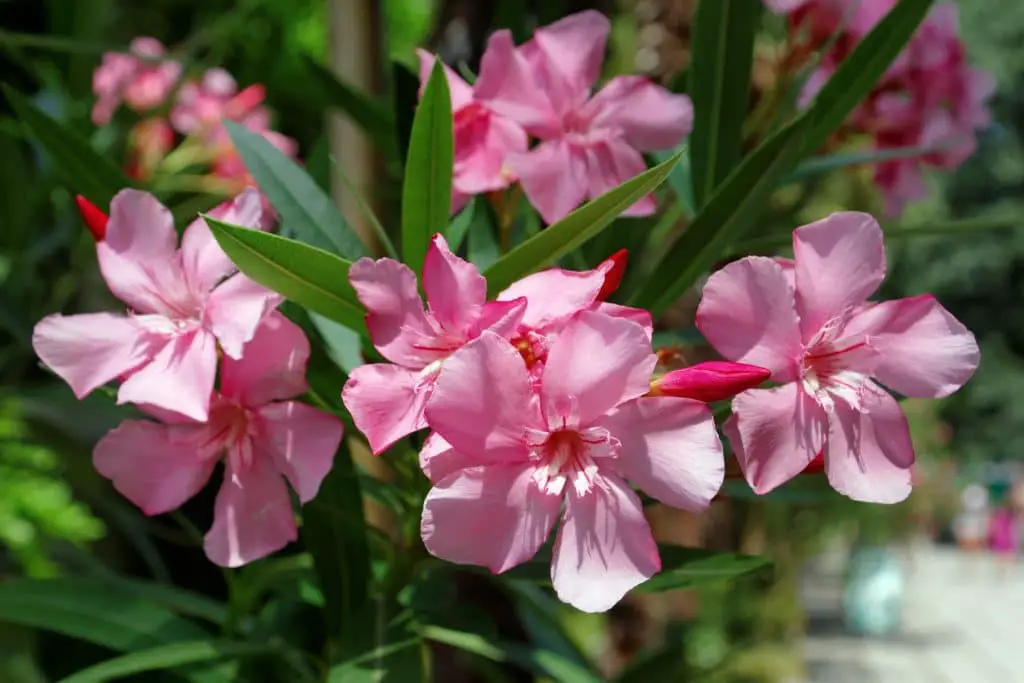
Good light is essential for oleanders to produce flowers. Indoors, place your oleander in a sunroom, porch or cool room in full light or outdoors in a sheltered location that receives sun all or most of the day.
Plant the oleander in a good-sized pot using an earth-based potting mix (such as John Innes No. 3) mixed with a third of coarse sand or perlite to ensure good drainage. Place the vase where there is no danger of water stagnation: indoors, it can be on a large pebble saucer to protect the surfaces, while outdoors the vase should be barely raised from the ground if it is on paving.
Oleanders need regular watering from spring to autumn to keep the compost evenly moist and it is especially important that the plants do not run out of water in spring when flower buds are forming. During the winter, reduce the frequency of watering as growth slows. Fertilize with a liquid fertilizer about every two weeks from late spring to early fall.
Pruning oleander bushes is not essential but is often necessary to reduce the size of the plant, especially if you move from outside in the summer to overwinter indoors. The ideal is to prune at the end of winter or at the beginning of spring, but if necessary pruning can also be carried out in autumn. Start by removing any dead or damaged growth, then thin out crowded shoots. Cut flowering shoots in half and remove a few centimeters of non-flowering tips which will encourage bushy growth.
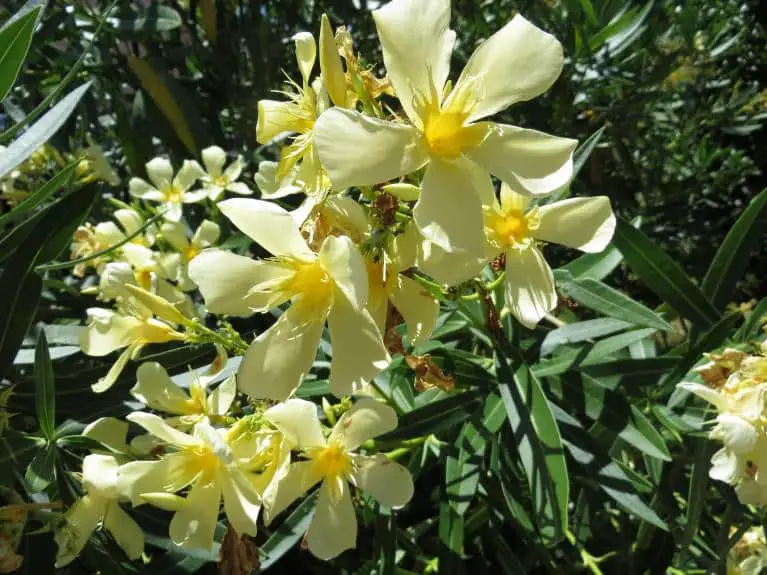
Each spring, repot oleanders growing in pots, moving up to the next container size. If the plants are already in large pots, cover them by gently scraping off the top 3-5cm of compost and replacing it with fresh, earth-based potting mix.
Take cuttings in mid to late summer. Select the non-flowering leafy shoots and take cuttings about 10cm long, using a sharp knife to cut just below the leaf joint. Dip the base in hormone rooting powder and place in pots of seed and cuttings compost mixed with an equal volume of perlite or sharp sand. Cuttings also root easily when left in water and can then be stored in compost when the roots are well developed.
Oleanders can also be grown from seed. Collect mature seed in autumn and sow immediately into moist compost as above.
Oleander plants growing under cover are more susceptible to pests than those growing outdoors. Be vigilant and regularly check for pests such as mealybugs, spider mites and scale insects: indoors, combat pests with biological control.
Plants are likely to be reluctant to flower if there is not enough light. Move to a sunny location for a better chance of flowering.
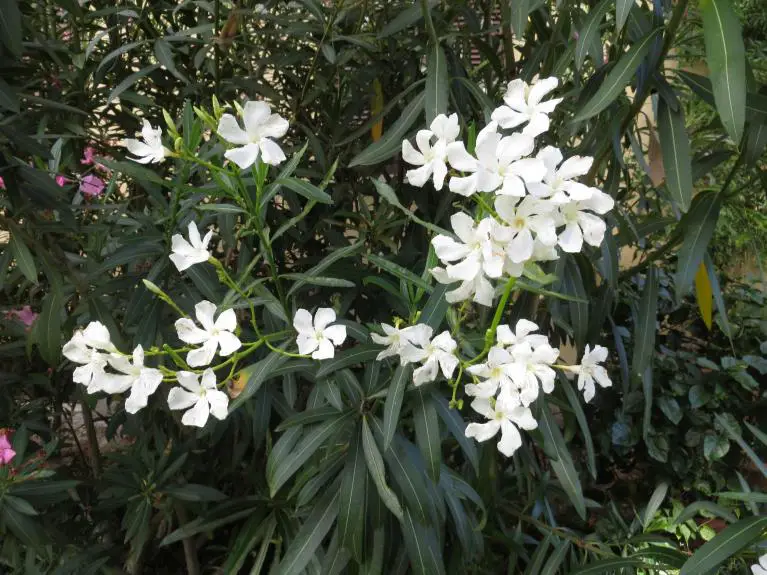
Flower buds dropping before opening are caused by the oleander drying out while the flowers were forming. Make sure the oleander does not run out of water during the growing season.
Yellowing foliage is a sign that plants are receiving too much water.
The size of the plant is limited by the size of the pot it grows in and varies based on the size of the pot. As a guide, potted oleanders grow in the region of one meter tall and 60cm wide, while oleanders planted in the ground of a veranda or outdoors could grow to around 1.5-1.8m tall with a slightly narrower spread.
#Oleander #beautiful #poisonous